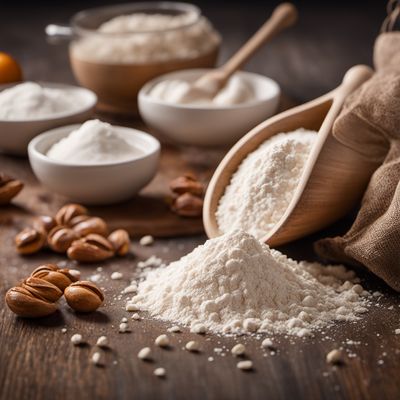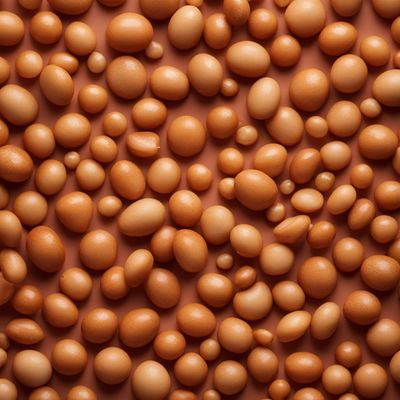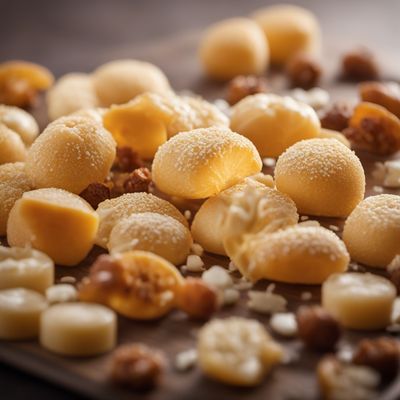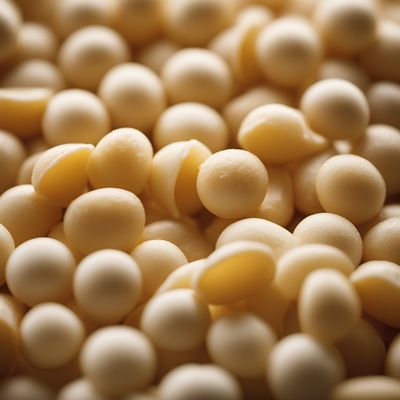
Ingredient
Thickener
The Art of Creating Perfectly Thickened Delights
Thickener is a substance used to increase the viscosity or thickness of a liquid or sauce. It is commonly used in both sweet and savory dishes to enhance texture, improve mouthfeel, and bind ingredients together. Thickener can be derived from natural sources like plants, animals, or even minerals, and it comes in various forms such as powders, gels, or pastes. When added to a liquid, it absorbs water and forms a gel-like substance, giving the dish a smooth and velvety consistency. It is an essential ingredient in dishes like soups, stews, gravies, sauces, puddings, and even ice creams. The amount of thickener used depends on the desired consistency, and it should be added gradually to avoid over-thickening.
Origins and history
The use of thickeners in cooking can be traced back to ancient civilizations. In ancient Rome, cooks used ingredients like ground almonds, breadcrumbs, and eggs to thicken sauces and soups. In medieval Europe, flour and breadcrumbs were commonly used as thickeners. Over time, various natural substances like arrowroot, cornstarch, gelatin, and agar-agar were discovered and utilized as thickeners. Today, thickeners have become an indispensable tool in the culinary world, allowing chefs and home cooks to create a wide range of dishes with perfect consistency.
Nutritional information
Thickener is primarily used for its textural properties and does not provide significant nutritional value on its own.
Allergens
Some thickeners, such as wheat-based flour or cornstarch, may contain allergens like gluten. It is important to check the specific type of thickener used to ensure it is suitable for individuals with allergies or dietary restrictions.
How to select
When selecting a thickener, consider the specific requirements of your dish. For savory dishes, cornstarch or flour-based thickeners work well, while gelatin or agar-agar are better suited for desserts. Look for high-quality brands and check for any additional additives or preservatives. Additionally, consider the desired flavor and transparency of the final dish, as different thickeners can affect these aspects.
Storage recommendations
Store thickeners in a cool, dry place, away from moisture and direct sunlight. Ensure the packaging is tightly sealed to prevent clumping or moisture absorption. Follow the manufacturer's instructions for specific storage recommendations, as some thickeners may have different requirements.
How to produce
While it is not feasible for amateurs to produce thickeners from scratch, they can experiment with different types of thickeners available in the market to understand their properties and applications better.
Preparation tips
When using a thickener, it is important to create a slurry by mixing it with a small amount of cold liquid before adding it to the main dish. This prevents clumping and ensures even distribution. It is also crucial to cook the dish for a sufficient amount of time after adding the thickener to allow it to reach its full thickening potential. Avoid boiling the dish vigorously, as this can break down the thickener and result in a thinner consistency. Adjust the amount of thickener based on personal preference and the desired thickness of the dish.
Substitutions
Cornstarch can be substituted with arrowroot powder or tapioca starch in equal amounts. Gelatin can be replaced with agar-agar using a 1:1 ratio. However, keep in mind that each thickener may have slightly different properties, so experimentation may be required to achieve the desired results.
Culinary uses
Thickener is commonly used in a wide range of dishes, including soups, stews, sauces, gravies, custards, puddings, and pie fillings. It is an essential ingredient in dishes like beef stew, chicken pot pie, chocolate pudding, and creamy mushroom sauce.
Availability
Thickener is widely available in grocery stores, supermarkets, and specialty food stores worldwide.
More ingredients from this category » Browse all

Acid
The Tangy Elixir: Unleashing the Power of Acidity in Culinary Delights

Emulsifying salts
The Magic of Emulsifying Salts

Humectant
The Moisture Magician: Unveiling the Power of Humectants

Antioxidant
"Nature's Defense: Unleashing the Power of Antioxidants"

Modified starch
The Versatile Transformations of Starch

Firming agent
The Secret Ingredient for Perfect Texture

Flour treatment agent
The Secret Ingredient for Perfect Baked Goods

Propellent gas
The Power Behind the Spray: Unveiling the Secrets of Propellent Gas

Bulking agent
The Secret to Fluffy Delights: Bulking Agent

Glazing agent
Enhancing Food Appeal

Anti-caking agent
The Secret Ingredient: Unveiling the Magic of Anti-Caking Agents

Stabiliser
The Secret Ingredient for Perfect Texture